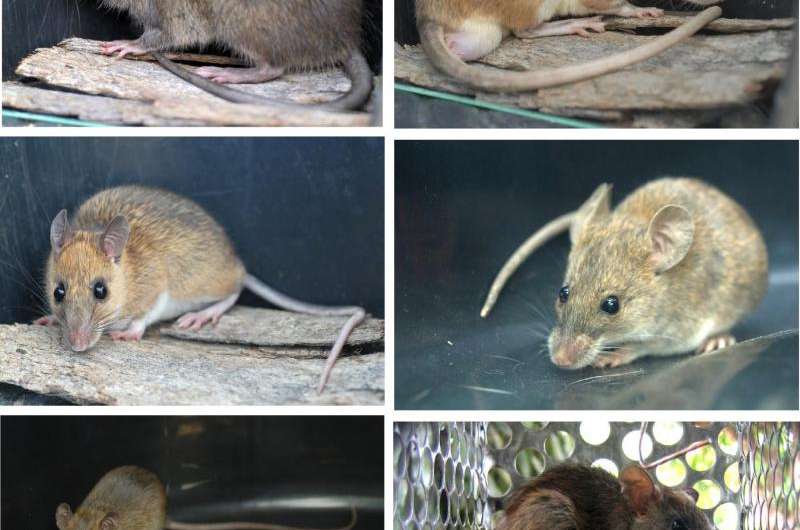Discovery of an ape virus in an Indonesian rodent species

The gibbon ape leukemia virus (GALV) is a medically important tool in cancer therapies. GALV is a retrovirus pathogenic to its host species, the southeast Asian lar gibbon (Hylobates lar) and thought to have originated from a cross-species transmission and may not originally be a primate virus at all. An international research team headed by the German Leibniz Institute for Zoo and Wildlife Research (IZW) screened a wide range of rodents from southeast Asia for GALV-like sequences. The discovery of a new GALV in the grassland melomys (Melomys burtoni) from Indonesian New Guinea supports the hypothesis that this host species, and potentially related rodent lineages in Australia and Papua New Guinea, may have played a key role in the spread of GALV-like viruses. The findings were published in the scientific journal Journal of Virology.
The scientists found that rodents from Indonesian New Guinea possibly contributed as vectors to a cross-species transmission leading to the infection of gibbons with the gibbon ape leukemia virus (GALV) and koalas with the koala retrovirus (KoRV). GALV is a retrovirus which causes a cancer (hematopoietic neoplasms) in captive colonies of gibbons. However, GALV has never been isolated from wild primates that did not have a captive origin. This suggests that some other species in contact with captive gibbons are the source of GALV. KoRV is a retrovirus closely related to GALV and therefore the two viruses share a common ancestor. Since koalas and gibbons do not overlap in distribution, a direct natural transmission between koalas and gibbons is unlikely. It is therefore probable that one or more mobile and widely distributed host species such as rodents carry GALV- and KoRV-like viruses and infected koalas and gibbons independently. The findings of this study are consistent with this hypothesis.
The scientists screened twenty-six southeastern Asian rodent species for the presence of KoRV- and GALV-like sequences using next generation high-throughput genetic sequencing techniques. Their aim was to identify potential intermediate hosts of GALV or KoRV like viruses. Only one rodent species was positive: a newly discovered subspecies of the grassland melomys (Melomys burtoni), also called the grassland mosaic-tailed rat, from Indonesian New Guinea. The samples of this species yielded an endogenous provirus very closely related to GALV, indicating that the grassland melomys may serve as intermediate host for GALV- and KoRV-like viruses.
Retroviruses use proteins (called receptors) on the host cell surface to gain entrance to host cells. Changes in the virus or in the receptor can prevent specific viruses from infecting some types of cells or infecting some species. The sequence of the critical receptor for GALV infection in the grassland melomys is consistent with the susceptibility of the species to GALV infection. Since the grassland melomys is not present in mainland southeastern Asia, where gibbons are distributed, the newly discovered virus cannot be a direct GALV progenitor. However, the discovery of such a close GALV relative in Indonesian New Guinea, and specifically in a transitional zone between Asia and Australia (Wallacea), may be relevant to the cross-species transmission to gibbons in southeastern Asia. Indeed, it is possible that the grassland melomys is one of several intermediate hosts which contributed to the cross-species transmission with koalas and gibbons as final end hosts. It is also possible that the viruses that gave rise to GALV and KoRV may be circulating in Wallacea in more mobile species which overlap with the grassland melomys. Further research in this part of the world will likely continue to yield new viruses belonging to this unique retroviral group.
More information: Niccolo Alfano et al. An endogenous gibbon ape leukemia virus (GALV) identified in a rodent (subsp.) from Wallacea (Indonesia), Journal of Virology (2016). DOI: 10.1128/JVI.00723-16
Journal information: Journal of Virology
Provided by Forschungsverbund Berlin e.V. (FVB)




















